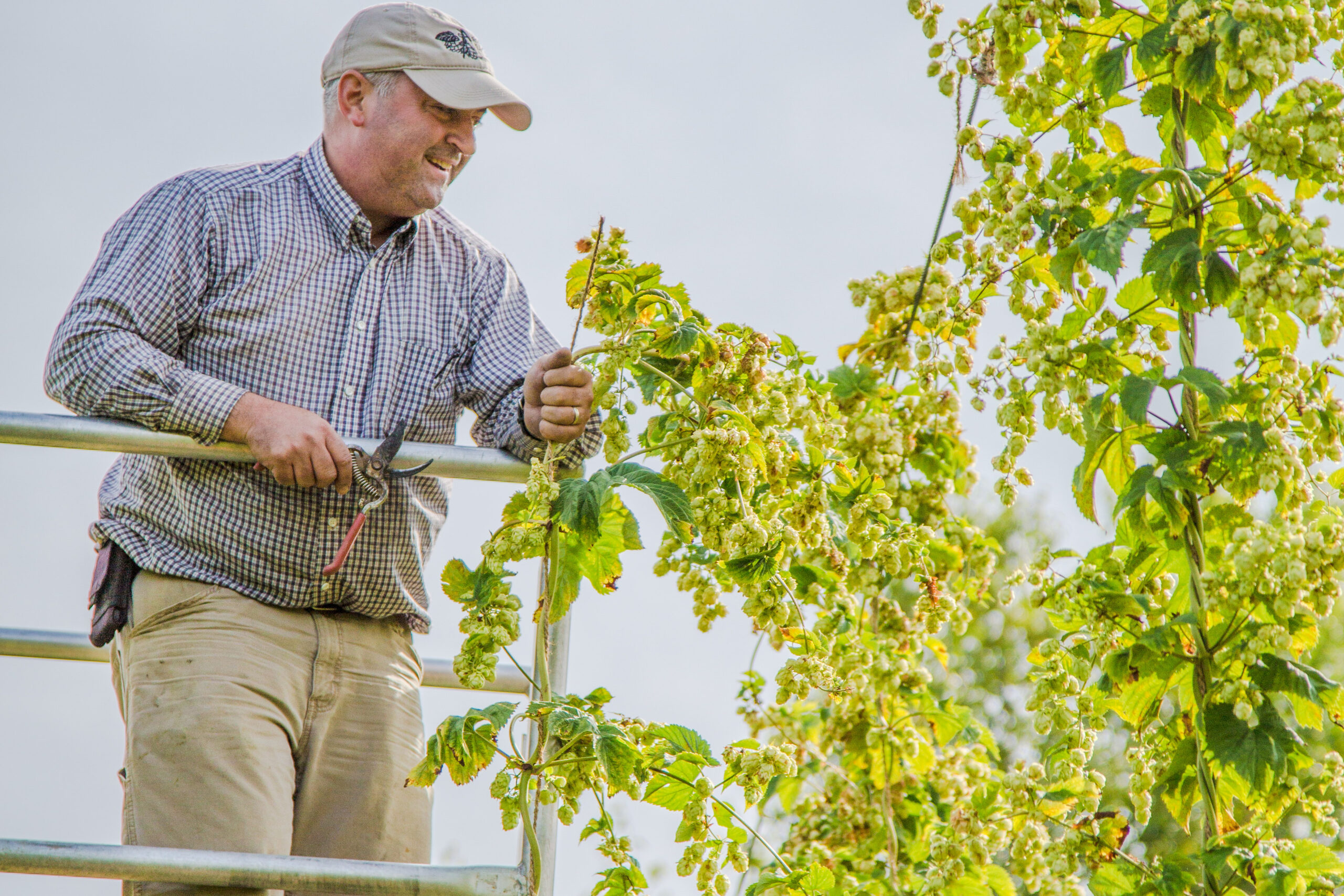
Aroostook County is famous for its potatoes, but two family farms are using its fertile soil to help grow the beer industry in Maine.
County farmers have successfully pioneered several specialty crops, including broccoli and alfalfa. Lately, hops and barley are expanding the agricultural picture.
Anytime a crop helps grow the local economy, it’s good news for farmers and the towns they call home. Aroostook Hops in Westfield and the Maine Malt House in Mapleton both started small, but have expanded their reach far beyond County borders. They now provide Aroostook-grown products to breweries from Fort Kent to Boothbay Harbor and elsewhere in New England.
“We started growing a few hop plants just for ourselves in 2008,” said Krista Delahunty, who with her husband Jason Johnston owns Aroostook Hops. “We liked growing things, working together, being outside, and recognized that there were very few farms in the Northeast growing hops.”
Fifteen years later, Aroostook Hops is growing commercially, although on a small scale. The certified organic operation grows about 4 acres of hops, about a fifth of the 20 acres grown annually in Maine, she said. The business consists of the couple and their four daughters.
Hops provide bitter, zesty or citric flavors to beers, according to the American Hop Museum.
Most commercial hops come from the Pacific Northwest, but Aroostook County’s climate is well suited for the plants, which grow about 14 feet high on trellises, Delahunty said.
Hops need a lot of water, sunlight, heat and nitrogen. The farm uses an irrigation system to deliver water and nutrients.
At harvest time, which usually starts in late August, they cut the vines and a harvester separates the flower cones, which become the final product. Some brewers use the raw flowers for “wet hop” brews, but most use the dried version, she said.
The cones go into a dryer, where Johnston and Delahunty adjust heat and dehumidification to dry them to the right moisture level, she said.
The dried hops are ground and formed into pellets, sealed in Mylar bags and treated with nitrogen to prevent oxidizing. It’s this product most brewers use.
At Mapleton’s Maine Malt House, Jacob Buck was overseeing the malting process Thursday afternoon. Bruce and Lauri Buck and their four sons — Jacob and twin brother Caleb, Jared and Joshua — own the business. There are 10 employees.
“We were in the potato business until a few years ago, then we switched to all grain,” Buck said.
Buck Family Farms grows about 2,300 acres of primarily barley, with some wheat and oats, mostly for food use. Maine Malt House is a division of the farm and creates the product breweries use.
Tall silos outside the facility store the grain, which can last in storage for more than a year, Buck said.
Processing the raw grain takes three steps: steeping in water to add the right moisture level; germinating, where the grain actually sprouts; and kilning, during which the grain is essentially roasted and dried. Once processed, the grain is then malt.
“The reaction happens in the kernel, like what happens to bread in a toaster,” he said. “The more [the grain] is heated in the kiln, the darker the malt will get.”
Brewers use different roasts for various products. Lightly roasted “biscuit malt” goes in lighter-colored and milder ales, while dark roast lends itself to darker, more hearty beers, Buck said.
Malt provides the alcohol content, flavor, color, head retention and mouth feel in a beer, he said. It’s a complex art that combines different malt grains with hops to provide whatever balance of taste, alcohol, color and other attributes the brewer seeks.
It takes an average of 68 pounds of malt to make a barrel of beer, which yields 248 pints, he said.
Just like Aroostook Hops, Maine Malt House grew its business little by little. Buck remembers driving with his brother Josh around the state, carrying samples to brewers to introduce them to the product. The first year they maybe sold to half a dozen buyers, he said.
After the first year or so, business grew, and then boomed. Some years the farm actually contracts with other growers to supply enough grain to meet demand, Buck said.
Maine Malt House supplies more than 80 breweries, selling about 90 percent of its product to brewers all over Maine, including Northern Maine Brewing in Caribou, 1st mile in Fort Kent and Geaghan Brothers of Bangor, he said. The other 10 percent goes to different locations in New England.
Similarly, most of Aroostook Hops’ product goes to Maine breweries, including the Caribou company, Lubec Brewing Company, Footbridge Brewery in Boothbay Harbor, Allagash Brewing Company, Gritty McDuff’s, Fogtown Brewing in Ellsworth and Geaghan, Delahunty said.
Both companies declined to reveal their sales figures.
“Geaghan’s makes an IPA called ‘Big County’ that features all Aroostook County ingredients, including our hops,” she said.
They also provide hops to home brewers, and lately have supplied out-of-state makers of kombucha.
Kombucha is essentially a tea product that can be brewed either with alcohol or not, and hops can be added, according to the American Homebrewers Association.
Both Delahunty and Buck are glad they took a chance on expanding into brewery products.
Delahunty said she has been amazed at all the people who have wanted to learn more about hops.
Though his family farm grew potatoes for 57 years, Jacob Buck said moving into the grain realm was the right move.
“We got in at a good time, when the market was right,” he said. “We ship and process year round. That’s the nice thing about grain is it’s non-perishable, as long as it’s treated correctly.”







